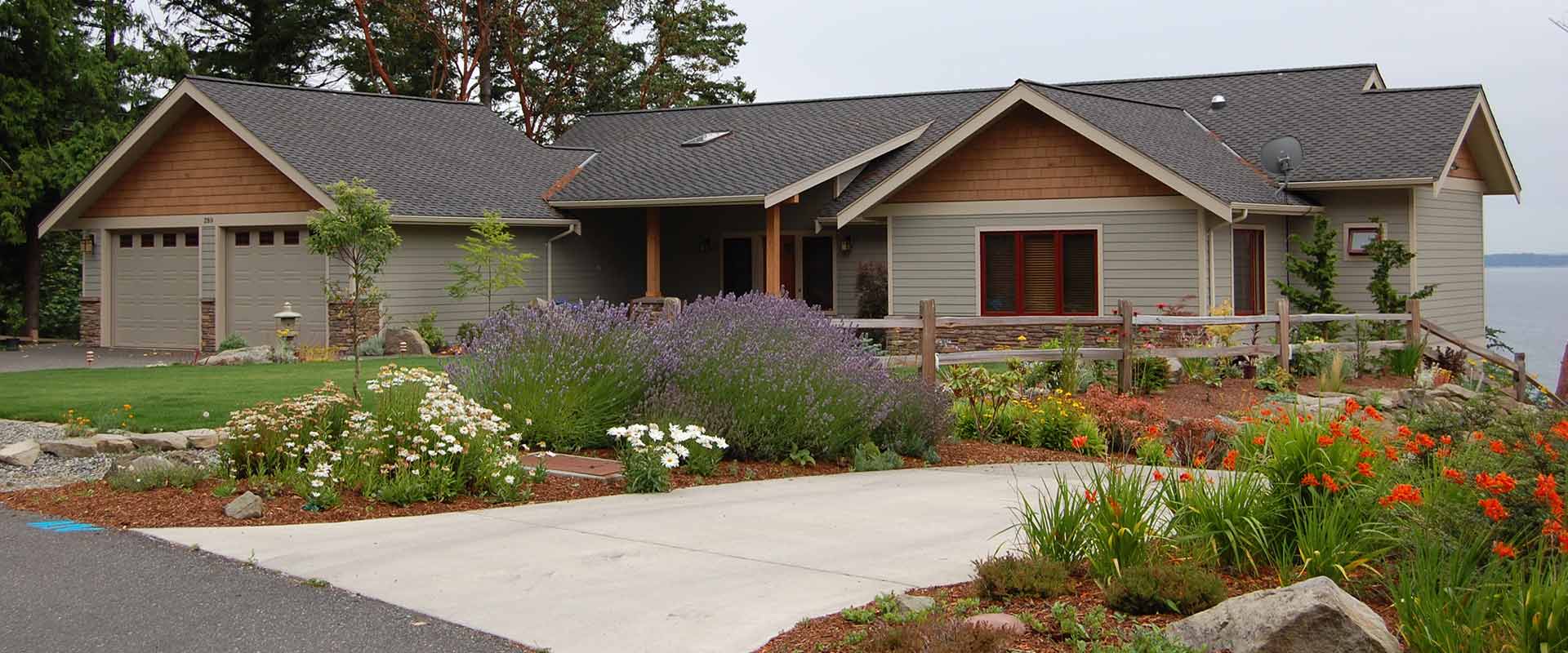Proper mulching techniques to help Seattle and North Bend homeowners provide better care of their trees. Eastside Tree Works want you to have all the necessary information to correctly mulch your yard and improve the health of your landscaped areas.
Benefits of proper mulching
Mulching offers real benefits that go far beyond just improving the look of your landscaping.
- Help maintain soil moisture by reducing evaporation
- Controls weed germination & growth
- Protects roots from heat in summer & cold in winter
- Over time can improve soil biology, aeration & drainage
- If mulch is type that decomposes, it can increase fertility
- Can prevent certain plant diseases
- Decreases chance of damage from mowing and trimmers
Why mulching helps in urban areas
Trees growing in urban areas have a different environment than those in a forest setting. Trees in the wild (so to speak) gets nutrients from fallen leaves and other organic material that is constantly breaking down to release nutrients into the soil.
The result is well-aerated soil that’s rich in microorganisms. In other words, it’s the perfect environment for root growth. By comparison, urban settings and new developments often have much worse conditions, such as poor-quality soil with little organic matter.
How mulch differs
You can buy organic and inorganic mulch. Here is more information to help you decide which is right for your yard.
Organic mulch
Organic mulch can be made from many things: wood chips, pine needles, hardwood or softwood bark, cocoa hulls, leaves, compost mixes or other plant material.
It decomposes at varying rates depending on the material, climate, and soil microorganisms present. How often it needs replenishment is reliant on how fast it decomposes.
Inorganic mulch
Inorganic mulch can consist of different types of stone, lava rock, shredded rubber, or other materials. These types of material do not decompose and will not need to be replenished as often. Since they don’t break down, they do nothing to improve the quality of the soil as they provide no nutrients.
Improper mulching
The “if some is good, more must be better” rule doesn’t apply to mulch. There is such a thing as too much. It’s true that a thicker layer is better at suppressing weeds but piling it on deeper than the recommended 2-4 inches can be harmful.
- Thick layers of fine mulch become matted over time and reduce penetration of water & air.
- Mulch against the trunk/stems of plants can soften the tissue making it more prone to insect & disease infestations.
- Piling mulch next to trunk can lead to growth of girdling roots which can reduce growth and eventually kill the tree.
- In wet soil, excess mulch prohibits soil drying & the extra moisture can lead to root rot.
- Mulch containing fresh grass clippings decompose & may affect soil’s pH level leading to nutrient deficiencies or toxic buildups.
If you’re thinking about applying mulch over wet soil areas, you may want to leave the ground bare or use a thin layer of inorganic mulch to prevent problems mentioned above.
Mulching tips for best results
When spreading mulch over well-drained sites, a 2-4” layer is best. Fine mulches should be 2-3“, whereas course blends (wood chips or bark nuggets) should be 3-4” thick.
- Mulch should be pulled back several inches to expose the base of the trunk.
- Mulch should extend to the drip line (if possible) & a 3 ft. radius ring is the minimum area.
- If there’s existing mulch on area, it’s best to break up the matted layers before applying new or simply remove the old.
- If there’s existing mulch that you don’t remove, measure the depth so you don’t put on more than the recommended amount.
- If the species has symptoms related to a pH problem, select a mulch that can help correct the issues.
Follow these proper mulching techniques for the best results. Please contact Eastside Tree Works if you need pruning, removal, or other tree services to keep your Seattle or North Bend property looking its best.

